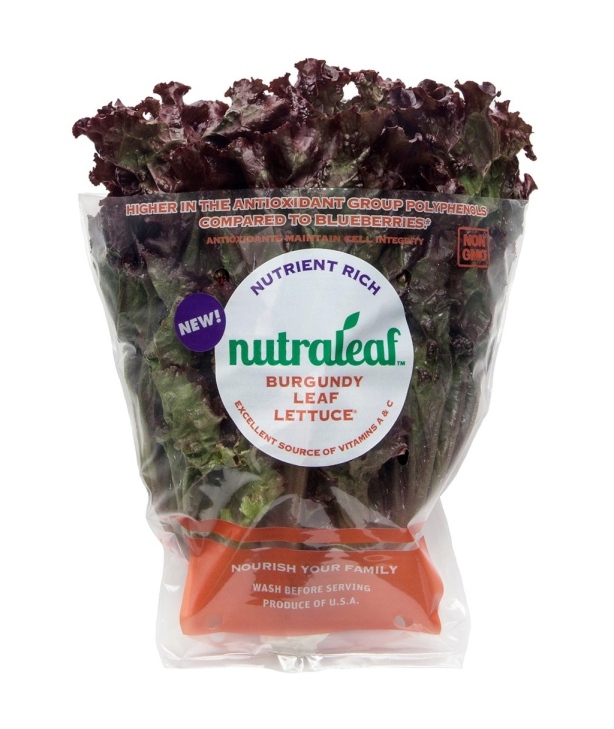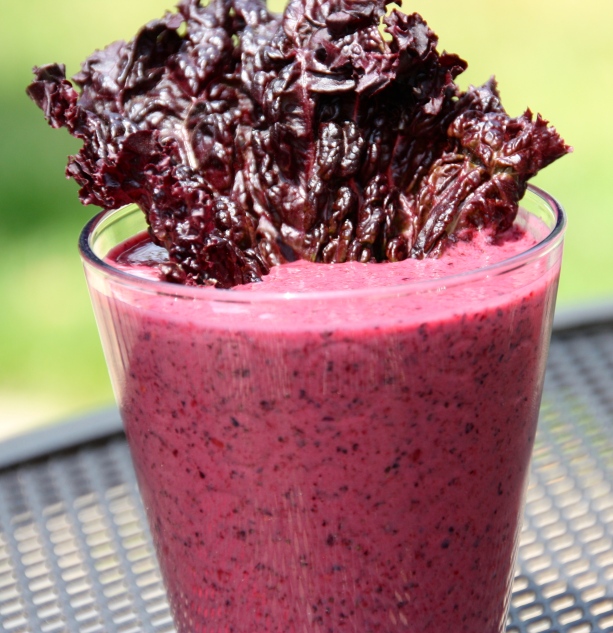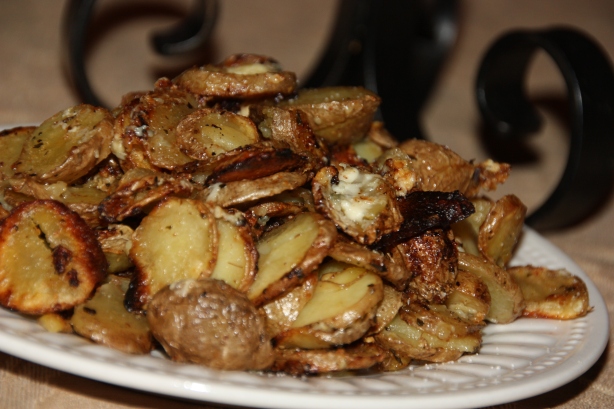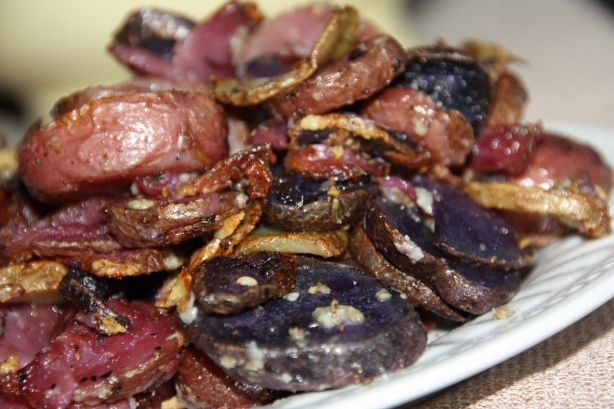Adjusting to any new place always comes with its up and downs I think. Everyone remembers that feeling of uncertainty and fear as your parents dropped you off for your first day of school or camp. …

Kansas City Photographer
By David Grotto, MS, RDN, LDN
The 2015-2020 Dietary Guidelines for Americans encourages the consumption of a variety of protein sources including those that are plant-based such as legumes (beans and peas), nuts, seeds and soy products. However, reducing or eliminating meat and dairy sources from the diet, especially for the student athlete, can impact important nutrients such as protein, iron, calcium, and vitamins B12 and D, if not planned for accordingly.
Working with a sports registered dietitian not only helps increase understanding of how to choose and prepare plant-based proteins, but they can also identify the unique nutrient needs of the student athlete and develop an optimal dietary strategy to support training and competition demands. Included below, are some helpful tips from the NCAA Sports Science Institute and the Sports, Cardiovascular and the Wellness Nutrition practice group from the Academy of Nutrition and Dietetics.
| Nutrient | Plant Sources | Tips |
| Protein | Beans, peas, lentils, tofu, texturized vegetable/soy protein, quinoa, nuts, seitan, and seeds. | 1. Adding eggs and dairy to any plant based protein dishes makes it a complete protein source.
2. Choose soy foods such as edamame, tofu, soy milk, tempeh and veggie protein products for complete proteins.
|
| Iron | Beans, peas, lentils, nuts, seeds, whole and enriched grains,
dark-green leafy vegetables, dried fruit |
1. Look for “iron-enriched” or “fortified” cereals and bread products, as well as fermented soy foods (tofu, miso, tempeh).
2. Use cast-iron skillets for cooking. 3. Consume foods high in vitamin C (citrus fruits, strawberries, tomatoes, and kiwi) with iron-containing foods. 4. Avoid combining high-calcium foods, tea or coffee with iron-containing foods. 5. Iron supplementation may be indicated **.
|
| Calcium | Broccoli, cabbage, kale, collards, mustard and turnip greens,
almonds, calcium-fortified milk alternatives such as soy, rice or almond milks, juice. |
1. Choose dairy items such as milk, cheese or yogurt or calcium-fortified dairy alternatives.
2. Calcium supplementation may be indicated **. |
| Vitamin D | Vitamin D-fortified dairy alternatives, juice, mushrooms | 1. Choose fatty fish (salmon, sardines, mackerel), eggs, dairy or vitamin D-fortified dairy alternatives.
2. Vitamin D supplementation may be indicated**. |
| Vitamin B-12 | Nutritional yeast (not baker’s yeast)
Vitamin B12-fortified: soy milk, fortified cereals, meat alternatives |
1. Vitamin B12 is of greatest concern for vegans. A multivitamin or a B-12 supplement may be indicated**.
2. Add in dairy products, eggs, or vitamin B-12-fortified dairy alternatives |
| ALA (Omega-3 Fatty Acid) | Walnuts, flaxseed (see Ingredients on food label), canola oil.
|
1. Add in fatty fish such as salmon and tuna, Cook with canola oil.
2. An omega-3 supplement may be indicated**.
|
| Zinc | Beans, peas, lentils, nuts, sesame and pumpkin seeds, whole grains, soy, meat alternatives, fortified cereals | 1. Hard cheeses, shrimp and scallops are also a source of zinc.
2. Zinc supplementation may be indicated **. |
** Talk with your physician or a sports dietitian about your unique nutrient needs and if a dietary supplement is indicated.
Lastly, eating a variety of foods on a regular basis increases the likelihood of getting essential nutrients into your diet and decreases the risk of deficiency. Monitor your performance level. If you note changes in your energy and performance levels, meet with your athletic trainer or see a sports dietitian.
For more information, visit www.scandpg.org or www.ncaa.org
Enjoy this portable, delicious, easy to make, plant protein-forward recipe!
Gardenburger® Veggie Wrap
Servings: Two
INGREDIENTS:
2 Gardenburger® patties, cut into ¼- inch strips
2 ounces shredded Swiss cheese
1/2 cup zucchini, cut into ¼-inch strips
1/2 cup Portobello mushrooms, cut into ¼- inch strips
1 Tbsp canola oil
Chopped lettuce and chopped tomato garnish
1 whole wheat pita bread, cut in half
PREPARATION:
- Preheat oven to 350 degrees.
- Combine Gardenburger® patties, canola oil with zucchini and mushroom pieces into a mixing bowl. Mix well.
- Spray non-stick roasting pan with cooking spray. Pour Gardenburger® mixture into a roasting pan and cook for 10-15 minutes. Remove from oven. Sprinkle Swiss cheese over mixture and stir in well.
- Place in pita pockets and garnish with lettuce and tomato. Serve.

Sources:
- NCAA: Vegetarian Eating for the Student Athlete. https://www.ncaa.org/sites/default/files/Vegetarian%20Eating%20for%20the%20Student-Athlete.pdf
- Thomas DT, Erdman KA, Burke LM. Position of the Academy of Nutrition and Dietetics, Dietitians of Canada, and the American College of Sports Medicine: Nutrition and Athletic Performance. J Acad Nutr Diet. 2016 Mar;116(3):501-28.
Cereal and Milk: It Just Fuels Right!
Posted: December 8, 2014 in Ask The Guyatitian, News, UncategorizedTags: Breakfast, cereal, dairy, fiber, milk, whole grains
As featured on the National Dairy Council The Dairy Report.
Posted By David Grotto On December 8, 2014 @ 8:27 am In Nutrition and Science | No Comments
Ever since I was a kid, I refused to limit my love affair for cereal and milk to only the breakfast occasion. This combo proved a simple and delicious after-school or before-bedtime snack that I didn’t have to bother mom and dad to “make”– especially considering my limited culinary prowess as a kid. The recipe ingredient simplicity of bowl [1], cereal [2], milk and spoon was culinary genius! Maybe, if I felt really adventurous, I’d add on a banana or other fruit topping… maybe.
The food pairing of cereal and milk was something my parents intuitively felt really good about — having a hunch that the combined nutrition merits were very special. As both a parent and a registered dietitian, I’m thrilled to confirm that my parents’ hunch was spot on. The marriage of cereal and milk* is not only a tasty combination that has been appealing to kids and adults alike for over a century, but it is truly an ideal breakfast when combined with a serving of fruit, snack or any occasion-pairing based on its nutrition, health benefits and convenience.1,2 [3]
[3]
The milk and cereal [4] duo delivers important nutrients that kids and adults otherwise might miss out on if they skipped breakfast altogether or picked a less nutritious choice.1,3,4 That’s a smart thing to do as it turns out that when it comes to breakfast foods, the cereal and milk combo is a one of the best choices in supplying up to 10 important nutrients for the amount of calories they provide.1,3
Plus, milk and cereal is one of the best combos in providing shortfall “nutrients of concern:”Many cereal and milk combos provide calcium, potassium, vitamin D and fiber.1 This can help populations such as children, adolescent girls, women and older adults who are at risk of not meeting their calcium needs based on their current intake.3 In addition to getting essential calcium, potassium and vitamin D from milk, some cereals are also fortified with these key nutrients to help meet this need. In fact, regularly eating cereals at breakfast can help provide adequate nutrient consumption.3,5
And the best part is that cereal and milk is an option available to many. It’s a good value and an affordable choice compared to many other popular breakfast options.1
Lastly, cereal and milk are great on-the-go partners for portability, nutrition and deliciousness! TASTE, not nutrition, is the number one reason why people purchase the food they do.6 Because cereal comes in a variety of flavors and textures, cereal and milk can be a perfect solution for making good nutrition delicious and do-able!
Here’s some tasty tips that just might fuel right for you!
- Grab single-serve cartons of cereal and low-fat or fat-free milk from the convenience store on your way to the kid’s game or as a healthy snack between errands.
- Refrigerate shelf-stable milk cartons and pack it along with single serve bowls of ready-to-eat cereals (RTEC) or RTEC pouches for kids’ lunches.
- Use milk instead of water to boost the nutrition of your favorite hot cereal.
- Add in fruit such as mixed berries, mandarin oranges or sliced mango. Fruit can offer additional vital nutrients such as potassium, fiber, vitamin C and folate.
- Top with nuts for added fiber and healthy fats.
- Be adventurous. Can’t decide between two different cereals? Play master chef and combine the two, three or more cereals for a new taste sensation. Don’t forget to pour on low-fat or fat-free flavored milk to provide even more flavor versatility!
*Choose low-fat or fat-free varieties first.
David Grotto, MS, RD, LDN is the author of The Best Things You Can Eat and also the Senior Nutrition Marketing Business Partner for the Specialty Channels division of the Kellogg Company. The opinions expressed in this blog post are those of David’s and not necessarily that of the Kellogg Company.
- Cereal: The Complete Story. Available here [5]. Accessed October 1, 2014.
- Kellogg’s: A Historical Overview. Available here [6]. Accessed October 2, 2014.
- Williams, PG. The benefits of breakfast cereal consumption: a systematic review of the evidence base. Advances in Nutrition. 2014;5(5):636S-73S.
- O’Neil CE, Keast DR, Fulgoni VL, Nicklas TA. Food Sources of Energy and Nutrients among Adults in the US: NHANES 2003–2006. Nutrients. 2012; 4(12):2097-2120.
- Song, WO, OK Chun, J Kerver, S Cho, CE Chung, S Chung. Ready-to-Eat Breakfast Cereal Consumption Enhances Milk and Calcium Intake in the US Population. J Am Diet Assoc. 2006;106:1783–1789.
- International Food Information Council: 2014 Food and health Survey. Available here [7]. Accessed October 30, 2014.
Nutraleaf: The Vegetable Formally Known as Lettuce
Posted: October 19, 2014 in News, recipesTags: Anthocyannins, Burgandy, Coastline, Leaf, Lettuce, Nutraleaf, polyphenols, purple, Romaine
Lettuce is one of the oldest known vegetables, native to the Mediterranean region, and thought to have been cultivated for nearly 5,000 years. Apparently Pharaoh was quite fond of the leafy green as homage was paid to him and lettuce in paintings found on the walls of ancient Egyptian tombs.
Romaine lettuce was one of the first lettuce varietals introduced to the United States, from England, in the 1600’s. Though it is the second most consumed vegetable in the United States today, lettuce gets a bad rap as just being a gateway vegetable for dressing. At best, it’s credited with making other vegetables tolerable. But finally, lettuce, thanks to researchers at Rutgers University, lettuce has finally come into its own.
Ilya Raskin, Distinguished Professor at Rutgers, and his team of researchers started with regular red lettuce as parent stock and then bred the darkest strains to create new deep purple leaf and Romaine varietals, which they call RSL (Rutgers Scarlet Lettuce), now branded by Coastline Family Farms in Salinas California as Nutraleaf Burgundy Leaf Lettuce and Romaine™. Coastline is introducing the new lettuces to the produce industry at the Produce Marketing Association’s Fresh Summit conference in Anaheim, CA, where 30,000 retail, foodservice and produce representatives gather. They will also introduce it to over 8,000 registered dietitians at the 2014 FNCE conference in Atlanta.

Dave out standing in his (actually Coastline’s) field…
The lettuces were developed, through natural breeding processes to contain higher levels of the antioxidant group polyphenols and anthocyanins – twice as high, based on phytochemical analyses, when compare to blueberries. Nutraleaf Burgundy Leaf Lettuce™ and Nutraleaf Burgundy Romaine™ are nutrient rich at only 20 calories per 2 cup serving, are an excellent source of vitamins A and C and the mineral manganese, and a good source of fiber. The Nutraleaf Leaf Lettuce is also a good source of iron and potassium.
Rutgers, who received partial funding for their research from the National Institutes of Health, has also been studying the impact of the new lettuces on health parameters. They have published one paper on their work in the prestigious scientific journal PLOS ONE and in the journal Nutrition. In this animal study, blood glucose was lowered in the intervention group that consumed RSL, which the authors attributed to the properties of the polyphenols found in RSL. In another animal study, just completed and awaiting publication, the Rutgers group also found positive effects on genetically obese mice. A European group is conducting a human nutrition study to document this benefit.
But what is great nutrition without outstanding taste and enjoyment? I think you will be thrilled with these yummy recipes I developed working with Coastline Family Farm’s for their Nutraleaf lettuces launch. Definitely try out my “Purple Reign” smoothie recipe. Are you digging the Prince references?
Ingredients:
Burgundy lettuce -6 leaves (1 cup)
Welch’s blackberry juice 1 cup
1 strawberry lite Greek yogurt (5.3oz)
1 cup frozen mixed berries
Directions:
Wash and pat dry lettuce leaves and place in a blender. Add remaining ingredients and blend until smooth. Serve with a lettuce garnish.

Grilled Mixed Veggies with Watermelon BBQ Reduction
Servings: 4
BBQ Reduction:
2 tablespoons Balsamic
2 tablespoons honey
2 tablespoons mixed berry preserves
3/4 cup watermelon juice
4 chopped prunes
½ cup frozen mixed berries
2 teaspoons tamari sauce
1-teaspoon dijon mustard
¼ teaspoon smoked paprika
2-tablespoons ketchup
Grilled mix
16 California Strawberries
1 cup purple cauliflower
2 medium Vidalia onions, quartered
1 red pepper, cut in 8 pieces
1 yellow pepper, cut into 8 pieces
4 ¼ inch slices of pineapple
8 purple fingerling potatoes , sliced in half
Dressing
2 tablespoons Olive oil
1 tablespoons Balsamic vinegar
1 tablespoon Honey
¼ teaspoon Italian seasoning
¼ tsp salt
¼ tsp black pepper
Directions:
BBQ Reduction:
Cut up watermelon pieces and place in a fine mesh strainer. Place strainer over a glass measuring cup. Press watermelon pieces with a spoon and express out enough juice to yield ½ cup. Pour juice into a saucepan. Mix in all remaining ingredients. Bring to boil over a medium heat. Reduce heat and cook reduction down to a BBQ sauce consistency (about 20 minutes). Stir frequently. Set aside.
Grilled Mix:
Preheat grill. Place fingerlings in a microwavable bowl and heat on high for two minutes. Set aside. Place whole strawberries on their own skewer with four on each skewer. Skewer remaining vegetables, including fingerlings, on their own skewer. Brush all skewers lightly with canola oil. When grill is hot, place skewers on the grill. Cook until grill marks are apparent on all sides. Remove strawberries once grill marks occur (just a few minutes). Brush BBQ sauce on remaining skewers and grill until veggies are soft. Set aside.
Salad:
Mix ingredients of dressing together. Set aside. Lay Burgundy lettuce leaves on a platter. Drizzle dressing over leaves. Place grilled mix on top of salad. Drizzle BBQ reductions over grilled mix and serve.
Lastly, Coastline Family farms, the exclusive grower/shipper of the Nutraleaf lettuces in North America, grows Nutraleaf lettuces along with 20 plus other premium lettuces and vegetables in the fertile Salinas Valley just inland from Monterey Bay, CA in the spring, summer and fall, and in the Imperial Valley in Southern California in the winter. To download more Nutraleaf recipes and for further information on Coastline Family Farms, please visit coastlinefamilyfarms.com/nutraleaf.
Berry BBQ Bonanza!
Posted: July 17, 2014 in Ask The Guyatitian, recipes, VideosTags: BBQ, California strawberries, Summer, Welch's
If you love BBQ like I do, then you are going to love these recipes. One is for a basic sauce that features California Strawberries and what has become one of my favorite juices to drink as well to use as a recipe ingredient – Welch’s Farmer’s Pick 100% Juice Blackberry. The other features favorite fruit such as cantaloupe, watermelon and California Strawberries. Of course, you are free to use whatever combination of fruit you’d like in the recipe I call Shish-Ka-Booze! Yes, there is definitely an adult theme to it but the alcohol in the recipe is burned off in the grilling process.
Besides great fresh fruit flavor and fun, there is a hidden agenda to using these ingredients when barbecuing. Antioxidant-rich fruit, such as berries, have been found to benefit heart health, cognition, diabetes and may protect against certain types of cancer. But I especially like to use berries as part of marinades and sauces which may help reduce the presence of heterocyclic amines (HCA’s) and polycyclic aromatic hydrocarbons (PAHs) which are known carcinogens (cancer causing agents). Also, eating antioxidant rich food in the presence of foods containing HCAs and PAHs may reduce their harmful effects. The best advice is to avoid charring your meats by using indirect cooking methods. Here’s a great link to the American Institute of Cancer Research who offers great safe grilling tips.
California Strawberry Shish-Ka-Booze
Tip: If time allows, let skewers rest in the refrigerator for 1-2 hours after basting to absorb mixture.
Servings: Makes six skewers
Ingredients:
1 pound California Strawberries
1 large cantaloupe
1 pound watermelon
1 tsp Nielsen Massey Tahitian Vanilla extract (or other high quality vanilla extract)
½ cup Dark rum
½ cup Maple syrup
6 Skewers
Directions:
Apply non-stick grill cooking spray to grill surface. Preheat grill at its highest setting. Cut fruit into large cubes. Alternate fruit on skewers and set aside. Mix vanilla, rum and maple syrup in bowl. Brush mixture liberally over fruit skewers. When grill is ready, place skewers on the surface and cook for a few minutes on each side or until grill marks are visible. Remove and serve when all sides are grilled.
Berry BBQ Sauce
Ingredients:
¼ cup cider vinegar
1 cup Welch’s Farmer’s Pick 100% Juice Blackberry
1 cup chopped California Strawberries
3 tbsp packed brown sugar
1 tbsp Worcestershire sauce
2 tbsp tomato paste
2 tbsp chopped garlic
1 tablespoon Bragg’s Liquid Aminos
½ teaspoon salt
1 teaspoon black pepper
Directions:
Combine all the ingredients in a medium saucepan and bring to a boil over medium heat. Reduce the heat and simmer for 20 minutes, stirring frequently. Remove from the heat and cool slightly before using. Apply liberally to meat, poultry or firm fish when grilling. Store remaining sauce in the refrigerator.
Let me know how you like these yummy BBQ treats! And as always, I would love YOUR ideas for fun and healthy recipes for summertime grilling. Hit me up in the comments section. Have a great rest of the summer!
Disclosure: I am proud to be working with both California Strawberries and Welch’s to bring you today’s recipes and healthful summer tips!
5 Purple Foods That Support a Healthy Heart
Posted: February 28, 2014 in Ask The Guyatitian, recipes, UncategorizedTags: cabbage, Concord grapes, eggplant, heart, polyphenols, potatoes, purple, Welch's, Wine

(That’s my almost 94-year-old dad enjoying one of his favorite purple beverages in moderation!)
David Grotto, RDN
I know you may be thinking that “seeing “red” was your only color choice when it comes to making smarter dietary choices to support heart health. Not so fast!
Though red is a wonderful color, there are more colors in the rainbow when it comes to doing what’s best for your ticker. Many of the foods that I recommend and feature in The Best Things You Can Eat for heart health actually come in red, white, tan, orange, green and even purple! Turning purple is a lot more fun and easier than holding your breath. That’s why I’m thrilled to be working with the folks at Welch’s to share the grape news about heart health.
Polyphenols are a group of plant nutrients that, according to the Produce for Better Health Foundation, may play a role in heart health by supporting healthy blood vessels. You’ll find polyphenols especially in purple variety foods such as grapes (think wine and 100% grape juice), cabbage, potatoes, eggplant and even non purple foods such as tea, onions and even nuts. In fact, berries (including grapes!) are a delicious way to get your daily dose of purple, and they deliver polyphenols (specifically anthocyanins) not found in many other colors of fruit.
Purple potatoes. This variety hails from South America and is rich in potassium, vitamin C in addition to polyphenols. By the way, leave the skin on. Like grapes, you’ll find polyphenols in the skins! Roast in a pan with extra virgin olive oil, salt and pepper. Yum!
Eggplant. Hard to believe that there was a time that this lovely vegetable was once thought to cause insanity and leprosy! Amazing! But the good news is you’ll find potassium, folate magnesium fiber and many other additional healthy nutrients in eggplant.
Purple Cabbage. Cabbage belongs to the family of veggies called Brassicas. This stinky but yummy veggie contains a healthy amount of fiber, vitamin C and anthocyanins. Glucosinolates, another group of plant nutrients found in cabbage, may help support a healthy immune system, too!
Wine. I see the debate brewing already. “Come on Dave … wine is not a food, it’s a beverage.” Well, hold onto your grapes of wrath! Red, purple, blue and black varieties of grapes are all used to make red wine. What distinguishes red versus white wine is that red varieties are allowed to have the skin and the seeds come in contact with the grape juice as it ferments. The health benefit may be due to a group of plant nutrients called polyphenols, which are abundant in red wine varieties. As with all alcoholic beverages, wine is beneficial for your health only in moderation.
Concord Grapes. And for those who are not wine lovers or choose not to drink alcoholic beverages, dark purple Concord grapes and 100% grape juice possess many of the same polyphenols as those found in red wine. Thanks to the Concord grape, 100% grape juice helps support a healthy heart. An 8 ounce glass of Welch’s 100% Grape Juice made with Concord grapes supplies 250 mg of polyphenols, provides an excellent source of vitamin C and counts as two servings of fruit.
Here’s a twist on the traditional tuna fish salad sandwich to include some tasty polyphenols and other healthy ingredients. Enjoy!
Grapes of Wrap
Servings: 6
Prep Time: 10 minutes
Ingredients:
¾ cup Purple grapes, quartered
2 cans Tuna or chicken, drained
½ cup Celery, chopped coarse
1/3 cup Purple/red Onion, chopped coarse
1 teaspoon Dill, chopped fine
¼ cup Canola oil mayonnaise
½ teaspoon Black pepper
2 teaspoons Honey
1 teaspoon Fresh lemon juice
1 tablespoon Welch’s 100% Grape Juice concentrate (defrosted)
¼ teaspoon Toasted sesame oil (optional)
½ teaspoon Dry mustard powder
6 Whole-wheat tortillas
Directions:
Combine all ingredients and mix well. Spread some of the salad on a whole-wheat tortilla. Garnish with lettuce and tomato, hold together with a toothpick and serve.
Nutrition Highlights
Calories: 195; Total Fat: 4.5g; Saturated Fat: 0g; Cholesterol: 20mg; Sodium: 460mg; Total Carbs: 27g; Dietary Fiber: 3g; Sugars: 6g; Protein: 18g

Henrici’s Steak and Lobster Photo Courtesy of ConsumerGrouch.com
by David Grotto, RDN
When I was a young lad, about 16 years old, I had a rare opportunity to cook at the then famous Henrici’s Steak and Lobster restaurants, scattered throughout Chicago and vicinity. I basically did most of the prep work there but they did allow me behind the line to cook their wonderful beer batter-dipped onion rings, assemble huge shrimp cocktails and prepare their famous mushrooms, which usually were an accompaniment to the thick and juicy steaks they featured. The last ingredient added to the mushrooms, as they were sautéing, was a healthy splash of dry vermouth, which always flamed up for a nice show. That vermouth really added flavor and helped brown up the mushrooms, nicely.
I think you are really going to like the recipe but don’t worry about the effects of the vermouth – the alcohol burns off as you are cooking down the mushrooms so they shouldn’t be calling DCFS on you because you served them to your kids.
Lastly, the mushrooms in this recipe really have a meaty flavor which is great for my veggie-leaning daughters who love the taste of meat but would rather not eat so much of it. Besides, they are thrilled to know that mushrooms are low in calories. Mushrooms are also an excellent source of chromium, selenium and a good source of pantothenic acid, riboflavin (B-2) and niacin. They are the highest vegetarian source of vitamin D and contain good amounts substances called beta-glucans which possess immune-stimulating and cholesterol lowering benefits. Mushrooms may be a worthy opponent in the fight against dia-besity. Research has shown that swapping out high calorie dense foods for low-calorie yet filling foods like mushrooms can help aid in managing weight yet feeling satisfied after meals. Reducing weight can help reduce the risk of type 2 diabetes. Enough nutrition…
Feast your eyes on these mushrooms!

Nice, eh?
Here’s the recipe! Very simple to make with only six ingredients.
Servings: 4
Prep and cooking time: 20 minutes
Ingredients:
24 ounces baby Portobello mushrooms, washed and sliced 1/4″thick (crimini, button, shiitake and oyster varieties work wonderfully, too)
2 tablespoons extra virgin olive oil
2 tablespoons butter, unsalted
1 teaspoon Lawry’s seasoned salt
1 teaspoon coarse black pepper
4 ounces of dry Vermouth
Directions:
In a large skillet, add olive oil and butter and warm over a medium heat until butter is melted and mixture starts to bubble. Add in sliced mushrooms. Stir and cover mushrooms well with oil and butter. Raise heat to high and continue to cook, stirring occasionally, until mushrooms become tender and fluid from mushrooms starts forming in the pan (about 10 minutes). Add seasoning salt and pepper. Stir mixture well. Cook for another few minutes until fluid in pan starts to reduce. Add vermouth and continue to stir and cook until mushrooms are browned and liquid is well reduced. Serve.
Hope you enjoy these mushrooms as much as we do. They are terrific over eggs, fish and of course, meat. But they also make a great side dish.
Image
—
Posted: February 14, 2014 in recipes, Uncategorized
Tags: Henrici's, mushrooms, vermouth
California Strawberries Siracha Salmon
Posted: February 12, 2014 in recipes, UncategorizedTags: salmon, siracha, strawberries
Hi all:
Hope you are enjoying all of the recipes that I have been posting lately. I realized I posted this delcious one to my Twitter and Facebook accounts but completely forgot to post it to my blog. Sorry! Anyhow, I developed the Strawberry Siracha Salmon recipe specifically for the California Strawberry folks so just click on the link here and you will be brought right to the recipe.
Important tip. Like it spicy? Leave the Siracha amount at 2 teaspoons. Want it favorable but not so spicy? Cut the Siracha down to 1 teaspoon. As always, let me know what you think in the comment section. Enjoy!
Dave
Marsala-Bleu Cheese Fingerling Potatoes
Posted: February 11, 2014 in recipes, UncategorizedTags: anthocyanins, bleu cheese, fingerlings, heart, marsala, Peruvian, potatoes, purple
By David Grotto, RDN
I wish I could eat my blog. I’m not sure if creating the recipes, taste testing them, taking the photos or writing about the ingredients and their health benefits is more enjoyable than the other. Yeah, right. Eating is the most enjoyable – who are we trying to kid here?
So Sharon (the wife) brought home some fingerlings to accompany some of her wonderful homemade chicken soup. I decided to pick out all of the purple ones and create a side dish that was rich in heart-healthy polyphenols. In fact, anthocyanins, the group of polyphenol plant chemicals that give these featured peruvian purple taters their color, are also responsible for giving red fruit, such as strawberries and cherries, their rich red color, too.
Research has shown that anthocyanins possess a wide range of biological functions including anti-inflammatory, germ fighting and even anti-cancer activity. Besides, they also help protect blood vessels and regulate blood components that lead to plaque formation and increase the risk of heart disease. But enough already with the healthy reason of why you should eat these taters – more importantly, they taste GREAT! So let’s get cooking!
If you can’t find the purple Peruvian variety, regular fingerlings will do. Both are pictured above. Let the fun begin!
Servings: 4
Prep and cooking time: 35 minutes
Ingredients:
1 pound fingerling potatoes, washed, sliced width-wise, 1/4 inch-thick
1/4 cup Marsala wine
2 tablespoon extra virgin olive oil
2 cloves garlic, minced
1/2 teaspoon coarse black pepper
1 teaspoon Kosher salt
2 tablespoons Parmesan cheese, grated
3 tablespoons Bleu cheese
Directions:
Preheat oven to 425 degrees. Spray a 9×12 casserole dish with non-stick cooking spray and set aside. In a medium mixing bowl, place olive oil, pepper, salt, garlic, marsala wine and potatoes together and mix well. Remove and line the casserole dish with the potato slices. Sprinkle parmesan cheese over the top of the slices. Place in the oven. Bake for about 10-15 minutes, until slightly browned. Remove from oven and flip over potato slices. Sprinkle bleu cheese crumbles evenly over the slices and return to the over until well-browned and the cheese has melted – about 10-15 more minutes. Serve and enjoy!
Hit me up in the comment section and let me know what you think!
Sharon’s Maple-Glazed Brussels Sprouts
Posted: February 8, 2014 in recipes, UncategorizedTags: Brussels sprouts, cruciferous, glucosinolates, maple, McCormick, vegetables
By David Grotto, RDN
Looks yummy, eh?
Well I must tell you. My wife Sharon and I absolutely LOVE Brussels sprouts – not only for their wonderful taste but also because they are an outstanding member of the crucifers – a group of stinky veggies that contain cancer-fighting and immune-boosting plant chemicals called glucosinolates. But unfortunately, they’ve been a bit of a hard sell to the Grotto girls. Alas! We may be on to something because when we served them to the kids last evening, they ate every last one of them and said, “I’d eat this version of Brussels sprouts, any day!” So without further ado, here’s the recipe that won the kids over.
Servings: 4
Cooking and prep time: 25 minutes
Ingredients:
1 Pound Brussels Sprouts (pick smaller varieties – they tend to be sweeter and less bitter)
2 tbsp Extra Virgin Olive Oil
1/4 teaspoon garlic powder
1/4 tsp McCormick Smokehouse Maple (optional. leave out if you don’t want a smokey flavor)
1/2 teaspoon salt
1/2 teaspoon black pepper
1 teaspoon Italian seasoning
1 tbsp real maple syrup
Directions:
Preheat oven to 420 degrees. Wash Brussels sprouts, remove any damaged leaves and slice each sprout in half. Pat dry. Add sprouts to a medium mixing bowl with all of the other ingredients and mix well. Spray a 9×12 baking dish with non-stick cooking spray. Pour sprout mixture into the baking dish and spread out over the entire bottom. Place in oven for about 20-25 minutes, stirring 2-3 times during the baking period. Brussels sprouts should be well-browned and starting to char when done. Serve.
Let me know what you think and if you have any of your own tricks to get kids to eat these cute little cabbage-like veggies!









